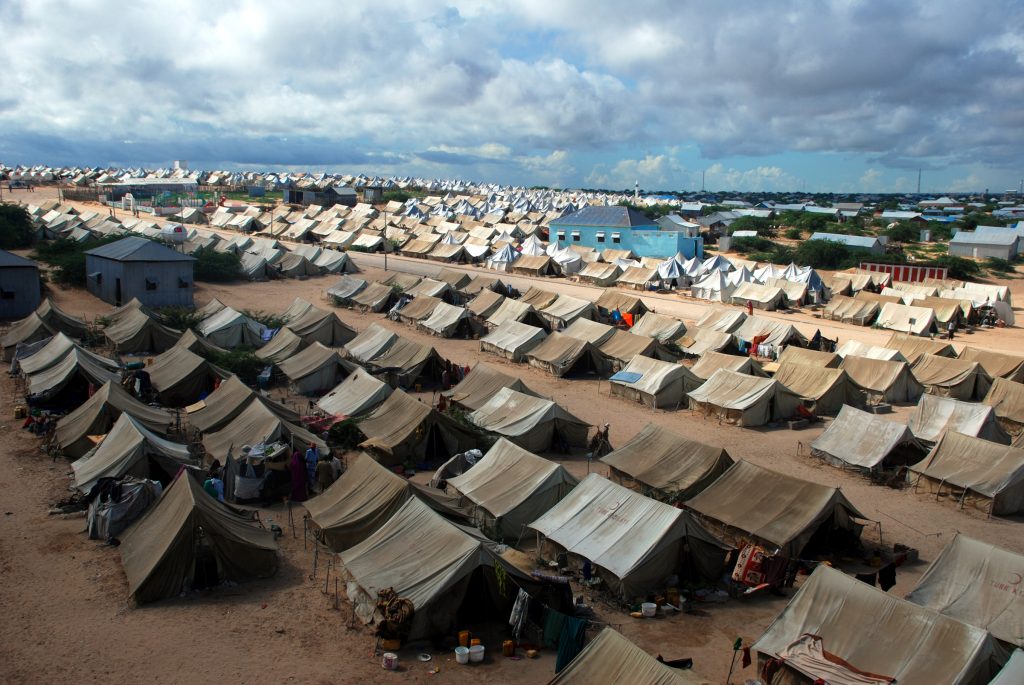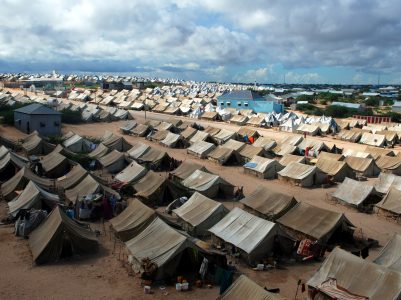By Christina Tobias-Nahi, Islamic Relief USA.
This post is part of a spotlight on the work and focuses of the IF20 Working Group on Refugees, Displacement, and Migration. See the working group page for more information.
– – –
In October, I risked flying during the pandemic to see my father who lives alone in the Rockies. Not only was I checking on his mental well-being after 8 months of being quarantined, but suddenly there was a new danger on the horizon – smoke-clogged skies triggering respiratory issues for older people and a fire encroaching within mere miles of his home.
Where would he go, especially with COVID raging? Fortunately for him, early precipitation and winter snows finally brought relief before he had to seek out a hotel or temporary emergency shelter.
However, this has not been the case with the spate of fires we’ve seen in the past couple of months in migrant camps where the most vulnerable (adults, children and even the elderly) are living, usually without running water or heat. With winter here, how do migrants survive the cold when their temporary huts or tents burn to the ground? Already displaced once, where can they go when no shelters or hotels will have them or they are too feeble to get there?
The Moria Camp
Throughout more than a decade of work in humanitarian relief, I have born witness in my travels to many refugee settlements, both formal (i.e. segregated camps) and informal (i.e. often neighborhoods or slums in a town). A couple of years ago, I was visiting a joint project of the NGOs Islamic Relief and HIAS in Lesvos, Greece—the initial landing point for many desperate refugees. As we know, floods of people fleeing diverse countries risked the treacherous seas to arrive in Lesvos, often capsizing and drowning en route in overcrowded rafts with fake life jackets that became waterlogged and ultimately failed them. I witnessed with my own eyes the lifejacket cemetery where the carcasses of such vests were strewn about. I saw the European ships that sit out on the waters at night to thwart would-be crossers.
Near the port, the Moria camp was set up as a temporary accommodation, meant to house just a few thousand people who were due to be processed to join family in Europe or to be returned to Turkey as part of the EU-Turkey Migration Deal. In September, some 13,000 ‘residents’ were forced out of Moria after cases of COVID were discovered and “far right nationals” allegedly went in with canisters of gas to set the place ablaze in the night. Migrants were barred from entering into the neighboring towns by police as they fled the fires, forced to sleep in fields.

The Lipa and Nayapara Camps
Similarly, in December, just days before Christmas, the Lipa camp on Bosnia’s border with Croatia also burned—forcing over a thousand migrants from their shelters. This camp was also only set up as a “temporary” shelter during the summer to cope with the coronavirus pandemic—again for processing those seeking refuge in Europe. Due to overcrowding, over a thousand more refugees were harboring in the forest surrounding the already-packed camp. Again, police refused them entry as they tried to get into towns to flee the blaze. More shockingly, due to local protests about relocating the refugees to a former army barracks, the displaced were returned to the smoldering camp on the buses that were meant to take them to safety. (Aljazeera, Dec 30) According to Islamic Relief staff working on the ground with the International Red Cross, frostbite and hypothermia are now taking hold amongst the stranded and freezing migrants. (Internal doc IR Bosnia, Dec 29)
Then, as 2021 rolled in, in Bangladesh’s Nayapara Camp, more than 550 shelters – home to at least 3,500 Rohingya refugees – were destroyed in a fiery inferno along with 150 shops. Most of these already traumatized people fleeing ethnic and religious persecution are now likely to be forced to relocate to a remote flood and cyclone-prone island via naval ship. (Aljzeera, Dec 29) According to the NGO Save the Children, “The devastating fire [has] robbed many families of what little shelter and dignity was left to them.” (Aljazeera, Jan 14)
Time for a Change in Perspective
Due to climate change, we have already seen this past autumn the way wildfires ravaged the Rockies and California, or the devastation caused earlier in 2020 in places like Australia and Brazil, where fires raged for weeks and weeks. Tragic, yes, but in areas where populations were affected, residents were able to relocate to get out of harm’s way—even though they will have to sadly pick up the pieces of their disrupted lives.
But what of those migrants and refugees who, because of overcrowded conditions and carelessness—or worse, due to malicious arsonists—have nowhere to flee? What will become of them?
How, with COVID still a threat, will they have access to what they need to slow the spread of this deadly virus with poor or nonexistent infrastructure? Where is the outrage over this spate of fires causing fellow humans to sleep in fields and forests in the dead of winter as others are in their heated homes? Where is the outrage when fellow human beings are bused back to burned-out camps or shipped out to far-flung remote islands?
It is time to change not just the laws and policies that allow this to happen, but our hearts, too—to see these others as akin to our own children, mothers or fathers and afford them the same dignity.
– – –
Christina Tobias-Nahi is the director of public affairs at Islamic Relief USA. She has held an exceptional academic and professional career, formerly working with Harvard University, where she also obtained her second graduate degree in education policy. Christina’s life experiences, from her childhood in Hawai’i to her time spent living in China and Paris, inspired her to dedicate her life to advocating for disenfranchised groups and promoting interfaith alliance.


